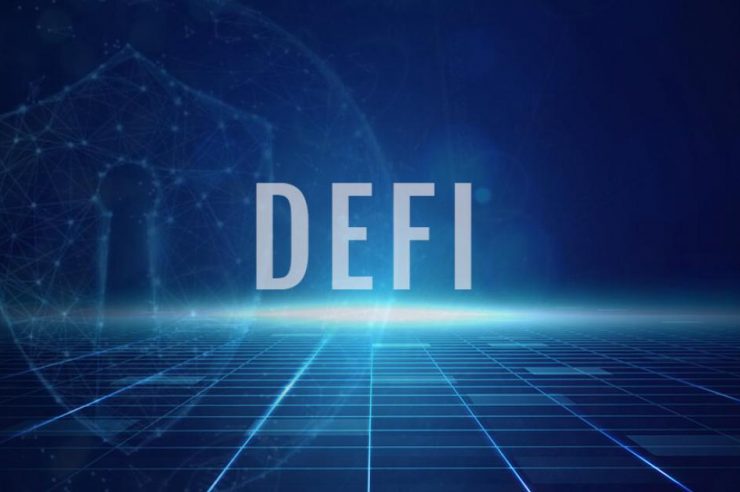It might look scary out there as the crypto crash rolls on, but if you stick with DeFi Coin (DEFC), your investment will not just be safe but a driver of outsized returns in your portfolio.
We have created an infographic below which puts the latest crash in perspective, looks at how a selection of coins have performed since the 2018 downturn and what it can tell us about future trends.
Suffice to say Defi Coin – and its newly launched sister product, the DeFi Swap decentralised exchange (DEX) – are well-positioned to be one of the winners this time around.
Which coins or project come out on top is difficult to predict but we can make some educated predictions by looking at past performance for an idea of those that are likely to gain the most traction going forward.
We set up a screener to look for those coins with a current market cap larger than $100 million that saw their all-time high made more than four years ago, to capture the underperformers that failed to fully recover from Crypto Winter 1.0 in January 2018.
Here are some of the names – and many will be familiar to investors who were around for the 2017 run up in valuations that imploded at the end of 2017 and beginning of 2018, in no particular order.
- Tron
- Bitcoin Cash
- Stellar
- EOS
- XRP
- Zcash
- IOTA
- NEO
- Dash
- NEM
- Qtum
- OMG Network
- IOST
- Bitcoin Gold
- Ox
- Lisk
We then sorted our results to find the coins by percentage down from their all-time highs, although some of these coins will not have been around in 2017/18.
Here are some of the names that were in the top 100 back in 2018 (and some that weren’t around then) and are outperformers today on the basis of our data (excluding the stablecoins and wrapped tokens):
Ethereum
BNB
PaxGold
Uniswap
Voyager Token
FTX Token
Gnosis
Kucoin
There is a striking pattern here – Bitcoin and Ethereum are the strongest in terms of the smallest percentage down from ATH, and the predominance of exchange tokens is striking. But other areas, such as DeFi stalwart Uniswap is significant, and tokenised gold coin PaxGold, and another DeFi representative Gnosis.
All of those provide hints as to where value may be likely to reside and persist looking forward, with DEXs, CEXs, smart contract platforms, Web3, Tokenisation of other asset classes, dominant themes. That means DeFi Coin is well positioned to weather the current storm and to prosper.
How to avoid making mistakes that risk locking in losses
TerraUSD is grabbing all the attention – and a lot of the blame – as crypto markets head south. But before you succumb to panic and hit the sell button, consider the fact that you haven’t lost money unless you actually sell and crystallise losses.
Certainly DeFi is in the eye of the storm and the collapse of TerraUSD is to blame for that. But as with all the previous downturns in the crypto markets, in time they pass with the best tokens posting new all-time highs.
In other words this is the worst of times to consider selling your holding of DEFC as we explain below.
Rebalance your portfolio
At times like this, investors should take the opportunity to offload those coins with the least chance of recovering and rebalance towards those that look best placed to survive the shakeout and go on to prosper.
We are reminded of legendary value investor Warren Buffett’s famous remark, “Be fearful when others are greedy and greedy when others are fearful.”
In other words, out of reversals come big opportunities. The extent to which market participants can be “greedy when other are fearful” will depend on the cash on hand available to individual investors and their risk profile.
Now is a good time to start cost averaging in by buying now to lower your entry price for coins you fancy but though they were previously too richly priced.
Not too late to work out your risk tolerance
We should add that it is also at times like this that investors discover what their actual risk tolerance (i.e risk profile) is. Some folks may have invested in crypto purely on the basis of the fear of missing out (FOMO) without doing much if any research about the coins being invested in.
But whatever an investor’s risk profile is, or the quality of cryptoassets they are holding, it is worth taking the time to revisit the investment rules and the rationale that informed your initial decision-making, or if you don’t have those rules and rationales in place, then take the time to formulate them now.
Making decisions in a rushed panic can have the effect of compounding errors and as we mentioned above by unnecessarily realising losses, as we mentioned above.
So if a decision to invest was made on the basis of research and analysis of a coin’s fundamentals, addressable market and execution credibility, then consider what may have changed that affects the underlying assumptions and rationale.
Draw up a balance sheet of pros and cons, assigning a weighted score to each metric and see how the coin scores and compares with other prospects, either in or outside of your portfolio.
Portfolio construction – diversification and asset allocation
And remember that the key to successful portfolio construction is diversification and paying attention to asset allocations. Put simply, don’t put all your eggs in one basket. So go for a number of different crypto sectors, such as the ones we have suggested, with DEFC an excellent choice for exposure to DeFi, and make sure that your net worth is not all committed to crypto.
Take stablecoins and DeFi, for example. TerraUSD and Luna may not have much time left on this planet but that doesn’t mean that stablecoins are a bad idea or that the disruptive technology of decentralised finance is in someway invalidated.
Why DeFi Coin (DEFC) fits the bill for a diversified well-balanced crypto portfolio
DeFi Coin (DEFC) is a relatively new product with a related DEX – DeFi Swap – that went live a matter of days ago, has the strong advantage of being able to learn from others’ mistakes and to combine the best of the rest, so to speak.
That’s what DEFC has done with its tiered staking system, liquidity provision returns, manual burn and the near-future focus on NFT trading.
And in terms of its risk-reward potential, although DEFC is a long distance from its all-time high, that is largely because of the uncertainties generated by doubting speculators in the marketplace about whether the DEX was being built as outlined in the roadmap.
But the DEX has arrived as promised so the returns runway ahead today has the strong tailwind of a newly launched product at its back. That’s a strong argument for keeping DEFC in your portfolio.
Still, as an ultra-small cap coin, there will perhaps be greater price volatility but again, the relatively small trading volumes mean that the entry of new buyers and users of the DeFi Swap exchange means the gains can quickly multiply in geometric fashion by doubling and doubling again for 100x gains and more.
DeFi use cases will be even more pertinent if a recession hits
Indeed the use cases for DeFi and Web3 are likely to come into even clearer focus as the world looks at the very real prospect of stagflation and global recession, forcing firms of all sizes to reconsider how they do business.
Although we shouldn’t take the parallels too far, but the dotcom boom that fell to Earth back in 2000 saw huge companies emerge from the wreckage, such as Google and Amazon. Now those same companies – trailblazers of Big Tech – may face new challenges from crypto upstart or adopt these new technologies in areas that don’t undermine their legacy profit bases.
A different sort of crypto crash – that could usher in gigantic boom sooner than you might think
But in order to think through how to respond to the current crash in valuations, we need to try and understand what is driving this downturn and how it might differ from previous downturns. With that information we will be better placed to try and pick winners and losers as we look to rebalance portfolios.
First, this is a downturn like no other in the sense that it is taking place in a period where central bankers are sucking liquidity out of the financial system – the opposite of the case for most of crypto’s life.
Then of course is the small matter of interest rates – they are rising as opposed to falling as they had been for most of the history of crypto.
Lastly there’s inflation and geopolitical turmoil to contend with too.
In the short term, crypto may have failed as a disinflationary diversifier. It has also failed as a safe haven against other asset classes. On the contrary it is trading as just another risk asset, and a particularly risky one at that.
However, over the medium term it will be a different story. Programmable money and decentralised networks will become more and more mainstream, from gaming to payments – just ask a Vietnamese gamer or a Ukrainian refugee.
Crypto crash: get ready for the crypto upturn with DeFi Coin
Some say the next bitcoin halving event will usher in the next surge higher when it happens in 2024. But for the coins that have real utility and growing active markets, the upturn will be much sooner and DeFi Coin is in the vanguard.
All of the above might tend towards the view that this could be a longer downturn than seen previously experienced.
However, it could be more likely that crypto has established itself as a legitimate asset class and while not being the great diversifier that the “hard money” advocates claimed it would be, programmable money and decentralised networks still have proven use cases.
As the asset class matures and the wheat is sifted from the chaff, the cream will come to the top.





Comments (No)